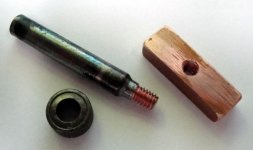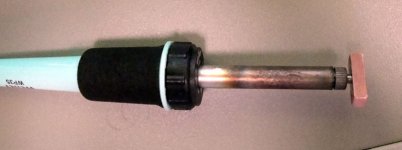http://www.allelectronics.com/cgi-bin/item/IR-258/search/16-30W_VARI-TEMP_SOLDERING_IRON_.html
I use one of these, you can get different shaped tips for them too.
I use one of these, you can get different shaped tips for them too.
Yep, I also know to heat the post first, then carefully apply the solder. Maybe if I bought myself a new iron with fine tip.. is temperature control a luxury or a neccessity?
This topic originated in the Apple 8-bit subforum, but since the discussion moved on to soldering in general, I thought to move it to a proper area.
<snip>
Back in the bad old days of big irons and copper tips, we used to extend the life of a tip by applying hard solder (silver solder) to the tip using an acetylene torch. That would probably destroy a modern tip. I do have an old Ungar 777 iron to which I fitted a nickel-silver tip (no silver in it; just a copper-nickel alloy).


